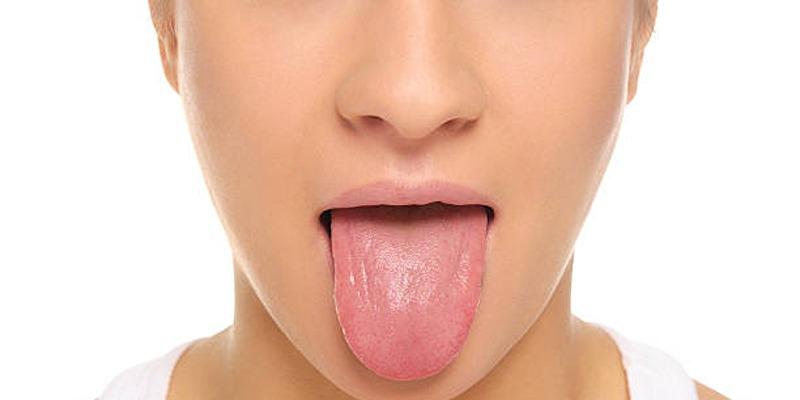The Significance of Tongue Colors and Their Impact on Health
Tongue color has a lot of implication to the health of a certain person. Anciently, many cultures composing the various systems of medicine for instances TCM incorporated diagnosis based on the tongue state. Healthy tongue looks like a light pink color with smooth or slightly rough coarse coat while white or creamy coating, yellow or grey, red or purple colored tongue can tell about different medical conditions or state of body organs.
Recognizing a Healthy Tongue:
A healthy tongue typically has a pink hue, a light, even coating, and prominent papillae—those small bumps responsible for taste and texture. It should feel moist, smooth, and free from any unusual spots, lesions, or discoloration. The surface shouldn’t be overly rough or bumpy, and the edges should appear uniform, showing no signs of swelling or irritation.
Changes in the tongue’s appearance such as alterations in color, texture, or the emergence of unusual coatings or patches can sometimes indicate underlying health issues, including nutritional deficiencies, infections, or other medical conditions. Monitoring these changes and consulting a healthcare professional when needed is a vital step in maintaining overall health and well-being.
What Your Tongue Color Says About Your Health?

Your tongue can reveal important insights about your overall health. Here’s a breakdown of common tongue colors and what they might indicate:
1. White Tongue
A white-coated tongue can result from several conditions:
- Oral Thrush: A fungal infection caused by an overgrowth of Candida yeast, leading to a thick, white layer on the tongue.
- Dehydration: Insufficient water intake can dry out the mouth, leaving the tongue pale or coated.
- Leukoplakia: Thick, white patches on the tongue, often due to irritation, though it may signal more serious concerns in rare cases.
Staying hydrated and practicing good oral hygiene can often resolve these issues. Persistent white patches should be evaluated by a healthcare professional.
2. Red Tongue
A red or bright red tongue may indicate:
- Vitamin Deficiencies: A lack of vitamin B12 or folic acid can cause swelling and redness.
- Scarlet Fever: This bacterial infection is often marked by a bumpy, red "strawberry tongue."
- Inflammation: Conditions such as glossitis can result in redness and a smooth texture.
Addressing nutrient deficiencies or treating underlying infections can usually restore the tongue's normal appearance.
3. Yellow Tongue
Yellow discoloration is often linked to:
- Poor Oral Hygiene: The buildup of bacteria and dead cells can lead to a yellowish hue.
- Jaundice: This liver-related condition causes yellowing of the tongue and skin due to elevated bilirubin levels.
- Dry Mouth: A lack of saliva contributes to bacterial buildup, causing discoloration.
Improving oral care and addressing any underlying liver issues can help resolve yellowing.
4. Black or Brown Tongue
A black or brown tongue may look alarming but is typically harmless:
- Black Hairy Tongue: Caused by elongated papillae trapping debris, giving the tongue a dark, hairy appearance.
- Diet and Smoking: Certain foods, beverages, or smoking can stain the tongue.
- Medications: Some antibiotics or bismuth-containing drugs can contribute to discoloration.
Enhanced oral hygiene and avoiding irritants can restore the tongue’s natural color.
5. Purple Tongue
A purple tongue is rare but may indicate:
- Circulatory Problems: Poor blood flow or oxygenation can cause a purple hue.
- Nutritional Deficiencies: A lack of essential vitamins like B2 may lead to discoloration.
- Heart or Lung Issues: In rare cases, this could signal more serious conditions affecting oxygen levels.
If your tongue appears purple, it’s best to consult a healthcare provider to identify the underlying cause.
6. Pale Tongue
A pale or light-colored tongue is often associated with:
- Anemia: Low hemoglobin levels can leave the tongue looking pale.
- Nutritional Deficiencies: Insufficient iron or vitamins may contribute to this condition.
- Cold Weather: Temporary paleness can occur due to reduced blood circulation in colder temperatures.
Eating a nutrient-rich diet and addressing deficiencies can help restore a healthy tongue color.
Key Tongue Features to Watch For:
By paying attention to these signs, you can catch potential health concerns early. If you notice persistent or unusual changes, consulting a healthcare professional is always a smart step for reassurance and proper evaluation.
Cracks or Fissures:
Cracks or grooves on the tongue, commonly known as fissured tongue, are typically harmless and quite common. However, they can sometimes be associated with conditions like geographic tongue, where smooth, red patches appear, or dehydration, which can leave the tongue overly dry. Staying hydrated and practicing good oral hygiene can help prevent discomfort. If the cracks become painful or worsen, it's worth discussing the issue with your doctor.
Swelling:
A swollen tongue can indicate a variety of issues, ranging from mild to severe. Common causes include allergies, infections (viral or bacterial), or thyroid imbalances. In some cases, medications or injuries can also lead to swelling. If the swelling becomes severe enough to obstruct breathing, it’s a medical emergency that requires immediate attention. Watch for accompanying symptoms such as redness, pain, or difficulty swallowing, as these can provide clues about the underlying cause.
Spots or Bumps:
Spots or bumps on the tongue are usually harmless, often caused by irritation from hot foods, minor injuries, or temporary conditions like canker sores. However, spots or bumps that persist, cause pain, or appear unusual and don’t resolve within two weeks might signal a more serious issue, such as oral thrush or even precancerous lesions. Regular dental or medical checkups are essential for early detection and treatment, ensuring your oral health remains in top condition.
When to See a Doctor?
Minor changes in tongue color typically improve with better hygiene or increased hydration. However, if discoloration persists or is accompanied by symptoms such as pain, swelling, or difficulty swallowing, it’s important to consult a healthcare provider. Early diagnosis of potential underlying conditions can help prevent further complications.
How to Maintain a Healthy Tongue?

- Prioritize Oral Hygiene: Brush your teeth and tongue daily to prevent bacterial buildup and keep your mouth fresh.
- Stay Hydrated: Drink plenty of water to support overall oral health and keep your tongue moisturized.
- Eat a Balanced Diet: Incorporate nutrient-dense foods to avoid deficiencies that can affect tongue health.
- Avoid Common Irritants: Cut back on smoking and limit acidic or overly spicy foods, which can cause irritation.
- Visit Your Dentist Regularly: Routine dental checkups are key to monitoring and maintaining your oral health.
Conclusion:
The tongue serves as a remarkable health indicator, providing important clues about our overall well-being. Its color and appearance can reveal potential health concerns, enabling early detection and timely action. By prioritizing oral hygiene and addressing any irregularities without delay, you can support better health and enhance your overall quality of life.












